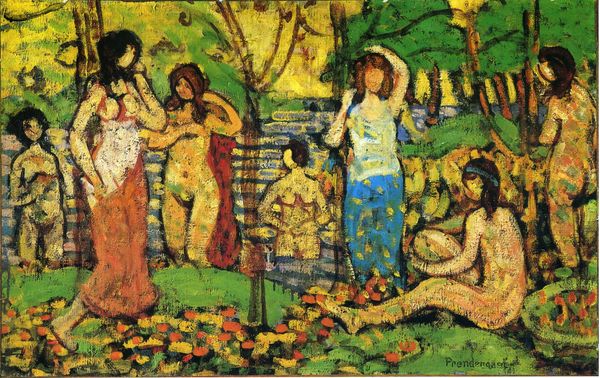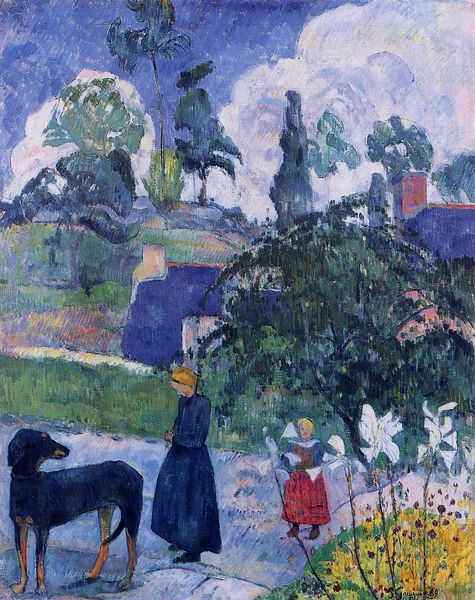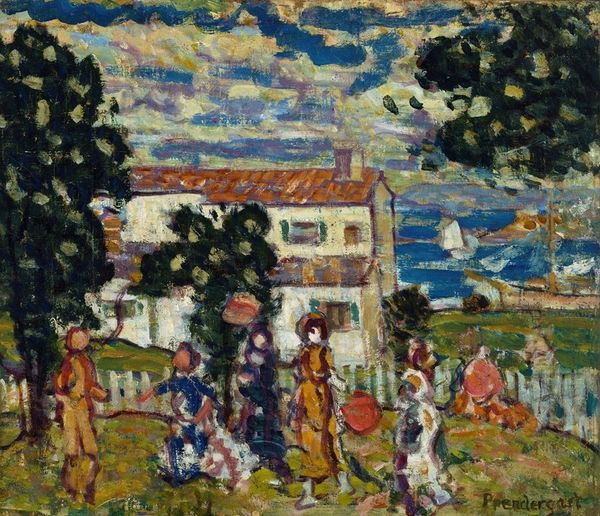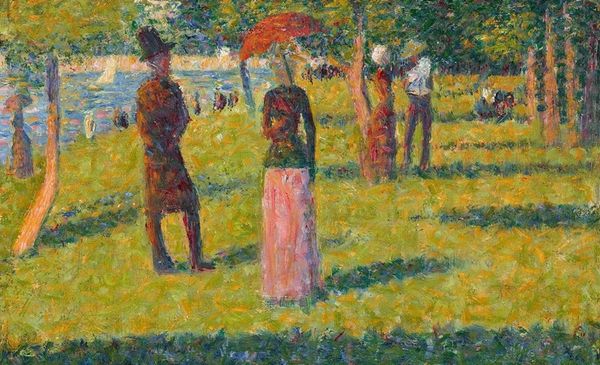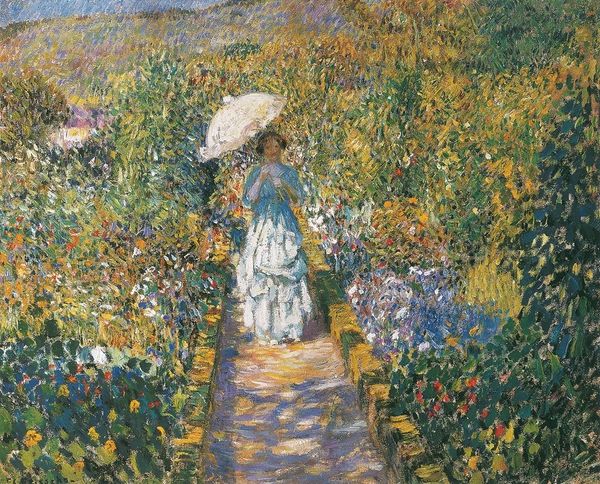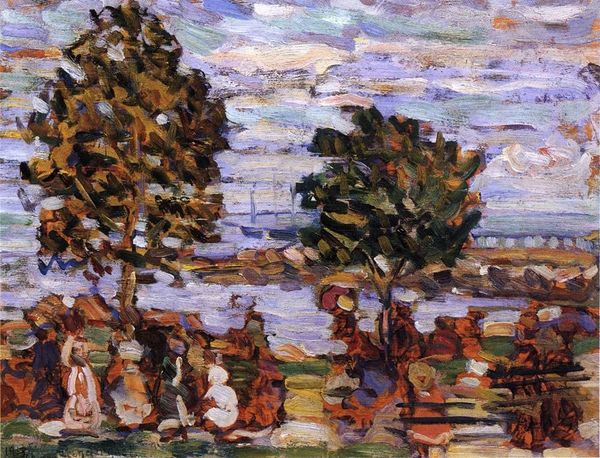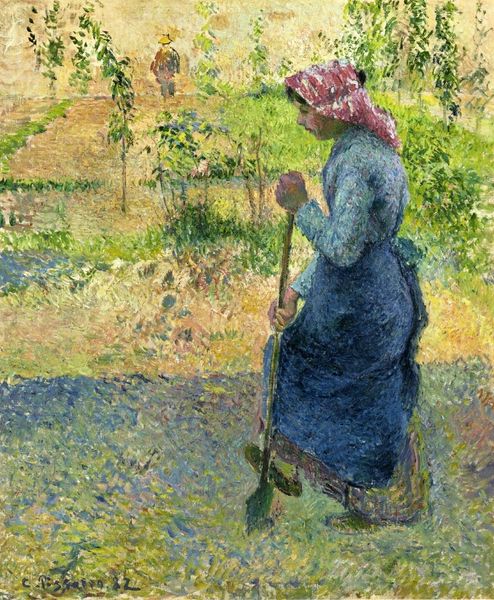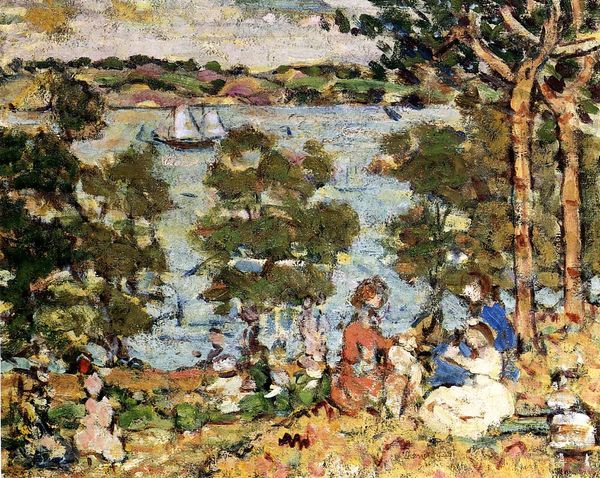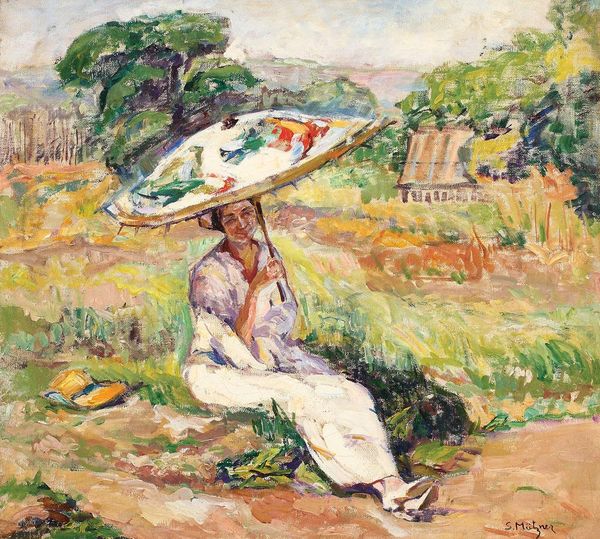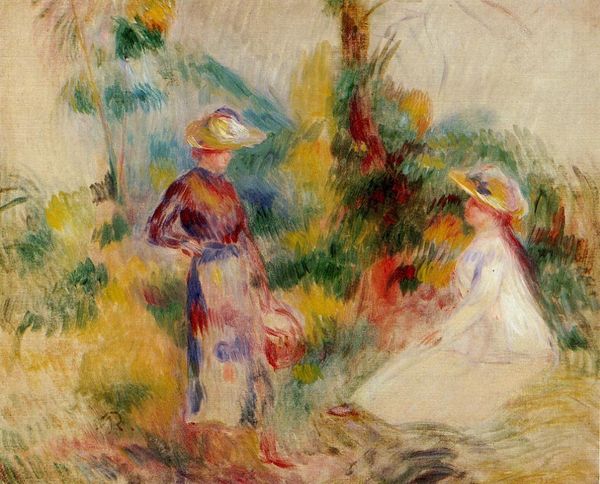
Lady in Yellow Dress in the Park (also known as A Lady in Yellow in the Park) 1915
0:00
0:00
mauriceprendergast
Private Collection
Dimensions: 26.67 x 34.93 cm
Copyright: Public domain
Curator: Looking at this image, what’s your first impression? Editor: It's dreamlike! The dappled sunlight and the way the figures almost dissolve into the landscape creates a scene of fleeting, idyllic leisure. The yellow dress anchors the composition, but even that seems to vibrate with the surrounding color. Curator: That vibrant yellow immediately catches the eye, doesn’t it? What we have here is "Lady in Yellow Dress in the Park," sometimes known as "A Lady in Yellow in the Park", an oil painting made around 1915 by the American Impressionist, Maurice Prendergast. Although the painting is currently held in a private collection, this image presents a typical Prendergast plein-air scene of leisure in a park. Editor: Leisure, definitely, but for whom? It strikes me that paintings like this, while ostensibly about beauty, can also be read as documents of class. Who has the time to stroll serenely in a park, draped in expensive fabrics, while others are working? The carefree ambiance hides a silent narrative of privilege. Curator: It is interesting how you observe class dynamics being visually present even when the social context remains invisible within the picture itself! Think, however, about Prendergast’s artistic choices in this painting. His work diverged from mainstream Impressionism towards a more Post-Impressionist style. It embraced brighter color palettes and flatter, less refined brushstrokes than contemporaries. Can you expand on this technique as we analyze further? Editor: Of course! Look how he builds the scene from mosaics of broken color. It’s less about representing reality and more about evoking a sensation, a mood. But even the seeming naivete of the brushwork speaks to something deliberate, a rejection of academic polish, which aligns with more progressive artistic movements of his time. There's a raw quality, an openness to interpretation here. Also, thinking about that flattening—doesn't it diminish the role and potential of its model? It feels a bit dehumanizing when considering current representations in visual culture. Curator: Prendergast’s commitment to the park as a democratizing public space is something historians consider crucial when approaching his overall message about accessibility to imagery for public audiences and beyond. But as an object, what readings do you feel resist historicity when examining its contents as they live in the present? Editor: Even in this scene which speaks so strongly about turn of the century America, the painting encourages conversations about how access to the landscape still privileges some bodies over others. Even though it risks flattening people and bodies, maybe the work reminds us about who, how, and why certain identities thrive while others are fighting simply to exist within that "park," within the frame of leisure. Curator: That’s a fascinating way to think about how Prendergast’s rendering invites present critique into his pictorial space. Editor: Absolutely. Art's never just about the past.
Comments
No comments
Be the first to comment and join the conversation on the ultimate creative platform.

